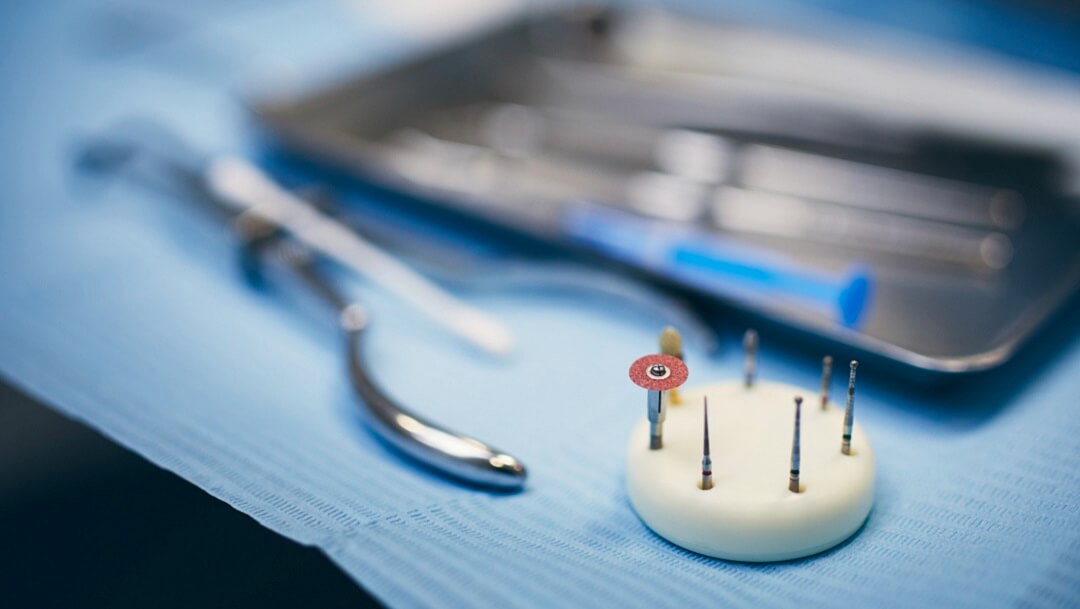You know that a good oral hygiene routine and regular dental checkups help keep your teeth healthy and give you a beautiful smile, but did you know it also helps to keep your bones healthy? The truth is, while your teeth are necessary for proper chewing and breaking down of food, they are also necessary for maintaining your jawbone. When you lose teeth or suffer from prolonged periodontal disease, you put your bone at risk, increasing your need for a bone graft. At Soundview Family Dental, we work with you to help maintain a healthy smile, but sometimes a bone graft is necessary to help rebuild your jawbone.
Key Takeaways
- Bone grafting adds volume and density to the jawbone for dental work.
- Bone loss can be caused by tooth loss, periodontal disease, or misaligned teeth.
- Types of bone grafts include socket preservation, ridge augmentation, sinus lift, and periodontal bone graft.
- Types of bone graft materials include autograft, alloplast, xenograft, allograft, and growth factors.
- Benefits of bone grafting include increased stability for dental implants, prevention of facial collapse, and stimulation of bone growth.
What is bone grafting?
Bone grafting is a procedure designed to add volume and density to areas of your jaw where bone loss has occurred. During a bone graft procedure, your dentist makes an incision to expose the bone in your jaw. Once exposed, bone grafting material is put in place, similar to scaffolding used in construction projects. This material stimulates your bone to create new bones cells around the grafted material, building your jawbone back to the volume it needs to support dental work such as implants or support surrounding teeth.
Who needs a bone graft?
Your teeth, and the act of chewing, naturally stimulate the bone in your jaw. When this stimulation no longer occurs, the body begins to reabsorb the bone in the jaw, resulting in less bone volume and shrinkage. Therefore, people who wear dentures experience a change in their lower facial structure. As the gums shrink, facial collapse occurs, often resulting in sunken or sagging cheeks, accelerating the signs of aging. Common causes of bone loss in the jaw include:
- Tooth loss – While many people think bone loss only occurs when you lose all your teeth, the fact is the loss of a single tooth can contribute to bone loss in that area of the jaw.
- Periodontal disease – Untreated periodontal disease allows the bacteria to gradually eat away the jawbone, as well as the periodontal ligaments that connect your teeth to the bone, often resulting in tooth loss.
- Misaligned teeth – The pressure you create when chewing is what stimulates the bone in the jaw. However, if your teeth are misaligned, the pressure when you chew may not be enough to maintain bone density.
So, if you have bone loss, when and why do you need a bone graft? People have turned to dentures for years, but many are now choosing to turn to dental implants for a more permanent dental solution and prevent facial collapse. In many cases, especially if you have worn dentures for years, you do not have enough bone to support dental implants effectively. In this case, a bone graft is necessary. If you only have one or two teeth missing, the loss of bone in that area may affect the surrounding teeth, and bone graft can help stabilize.
What are the different types of bone grafts?
When it comes to bone grafts, there are four main types of bone grafts for different conditions. These include:
- Socket preservation – This bone graft occurs immediately after tooth extraction and is used to fill the void left by the tooth to prevent the sides of the tooth socket from caving in.
- Ridge augmentation – For those with missing teeth for a long time, this bone graft procedure is designed to increase the width and volume of the jawbone to create a stable foundation for dental implants.
- Sinus lift – If you are missing your upper back teeth, your maxillary sinuses may drop down into the space once occupied by your tooth roots. When this occurs, dental implants are not possible as they could penetrate the sinus membrane. During this graft, the oral surgeon lifts the sinuses into the proper position and places grafts underneath to add volume and create a stable foundation in the jaw.
- Periodontal bone graft – If periodontal disease has weakened the bone that supports your teeth, a periodontal bone graft is placed around your natural teeth to increase support.
In addition to these different types of bone grafts, there are also different types of material used for bone grafts. Which one you choose will depend on what your oral surgeon suggests and your individual needs. Here we explain the different bone graft material possibilities.
Autograft
An autograft bone graft uses your own body tissue. While this provides many benefits, such as a low risk of rejection, it does require additional surgery to remove the bone from your body.
Alloplast
Alloplast grafts use synthetic or natural mineral material to promote new growth in the jaw. This option reduces the risk of disease, infection, or rejection and helps promote bone formation.
Xenograft
Xenograft bone grafts utilize bone graft material from an animal such as a cow or pig. This material is processed so that the remaining material left is the mineral components left in the bone. This material provides support to the jaw while the body replaces it with new bone.
Allograft
Allograft bone grafts use bone material harvested from donor bodies. These grafts can be great at stimulating bone growth. However, there is an increased risk of an autoimmune reaction or rejection of the donor bone.
Growth factors
Growth factors utilize recombinant DNA technology to create a synthetic protein naturally found in your body and help regulate bone healing and growth. This process uses an absorbable collagen sponge to infuse the growth factors into the jawbone to stimulate new bone growth.
Benefits of bone grafting
Dentists recommend bone grafts for a variety of different oral health care concerns. This procedure offers a wide range of benefits, including:
- Jawbone restoration – Restoring the bone mass in your jaw helps support other structures in your face, ranging from remaining teeth to your sinus cavity.
- Cosmetic – With bone loss comes structural changes to the face, often making a person look much older. Restoring the jaw’s bone mass helps restore and maintain facial structure, improving one’s appearance and returning self-confidence.
- Support – If you still have your natural teeth but are experiencing bone loss, a bone graft can help restore support to those teeth and maintain the support of the jaw itself.
- Improve dental appliance options – In many cases, a bone graft is necessary to support dental implants. Still, they often are necessary for dental treatments such as crowns, bridges, and even dentures.
Risks associated with bone grafting
While dental bone grafts are generally safe, all procedures come with potential risks. Some potential risks associated with bone grafts can include:
- Infection
- Heavy bleeding
- Nerve damage
- Complications from anesthesia
Are bone grafts right for you?
If you live with tooth loss or periodontal disease that affects your bone, bone grafts may be the solution to saving your smile. At Soundview Family Dental, we understand how important a smile is, and we are here to offer you all possible treatment solutions, including bone grafts. To learn more about how a bone graft may help you, contact us online today or call the office at (425) 563-6360 to schedule an appointment.


